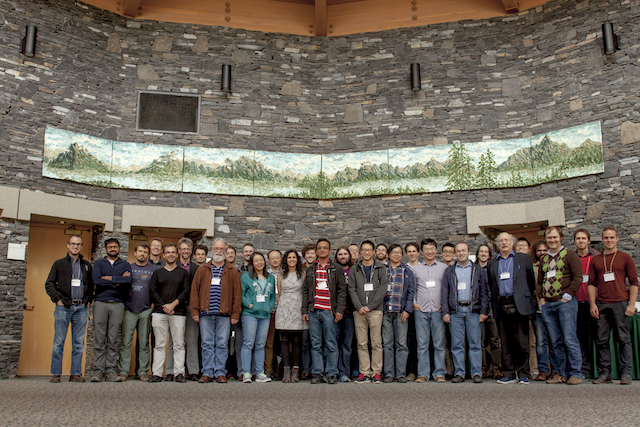Geometrical Degrees of Freedom in Topological Phases (16w5124)
Organizers
Joseph Maciejko (University of Alberta)
Eduardo Fradkin (University of Illinois at Urbana-Champaign)
Siddharth Parameswaran (University of Oxford)
Description
The Banff International Research Station will host the "Geometrical Degrees of Freedom in Topological Phases" workshop from August 21st to August 26th, 2016.
Topology is a branch of mathematics that studies properties of objects that remain invariant under smooth deformations. Topological phases of matter, as their name suggests, possess remarkable properties that are largely insensitive to materials details such as defects or impurities. In the fractional quantum Hall effect, a topological phase discovered in the 1980s that forms in semiconductors at high magnetic fields, exotic particles emerge that carry only a third of the charge of the electron. This fractional charge is an intrinsic property of the topological phase that does not change if, for example, the experiment is carried out in a different laboratory. Physical theories based on the mathematics of topology have been rather successful in accounting for such properties.
Recent developments suggest that topology alone may not be the end of the story. New types of topological phases have been discovered in which geometry, the branch of mathematics that studies the precise shape and size of objects and how these change under deformations, plays a fundamental role. Some of these novel topological phases are characterized by geometric patterns in space that coexist with purely topological properties such as the fractional charges mentioned above, while others can only exist in crystals with specific spatial symmetries. How a topological phase behaves when it is stretched and deformed turns out to contain important information about its topological character, contrary to what pure topology would suggest. There are even hints that geometry itself might emerge from topological phases, much like space-time emerges from matter in Einstein’s theory of general relativity. Furthermore, this emergent geometry would be subject to the laws of quantum mechanics, as in current theories of quantum gravity. Our workshop brings together researchers in mathematics and the physical sciences to discuss these recent advances and identify key goals for future research. Exploring the interplay between geometry and topology in topological phases will deepen our understanding of phases of matter and may suggest new and better materials for technological applications.
The Banff International Research Station for Mathematical Innovation and Discovery (BIRS) is a collaborative Canada-US-Mexico venture that provides an environment for creative interaction as well as the exchange of ideas, knowledge, and methods within the Mathematical Sciences, with related disciplines and with industry. The research station is located at The Banff Centre in Alberta and is supported by Canada's Natural Science and Engineering Research Council (NSERC), the U.S. National Science Foundation (NSF), Alberta's Advanced Education and Technology, and Mexico's Consejo Nacional de Ciencia y Tecnología (CONACYT)..






